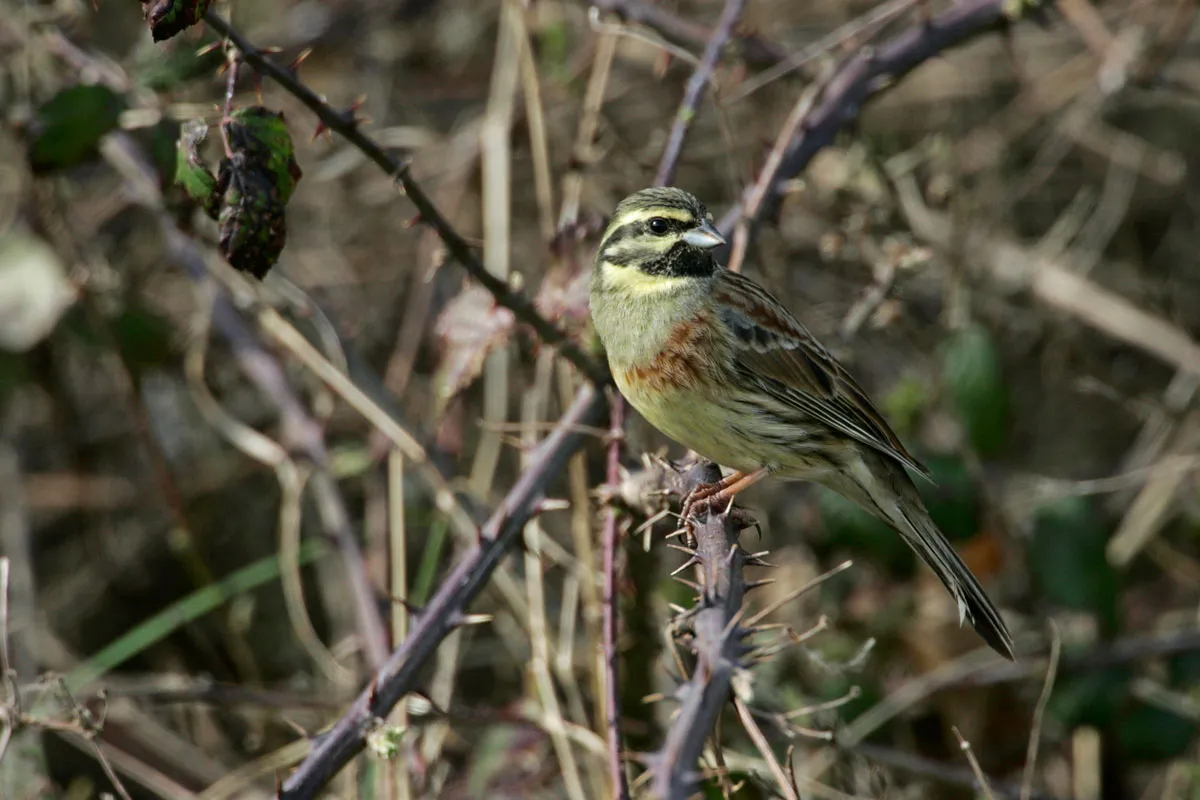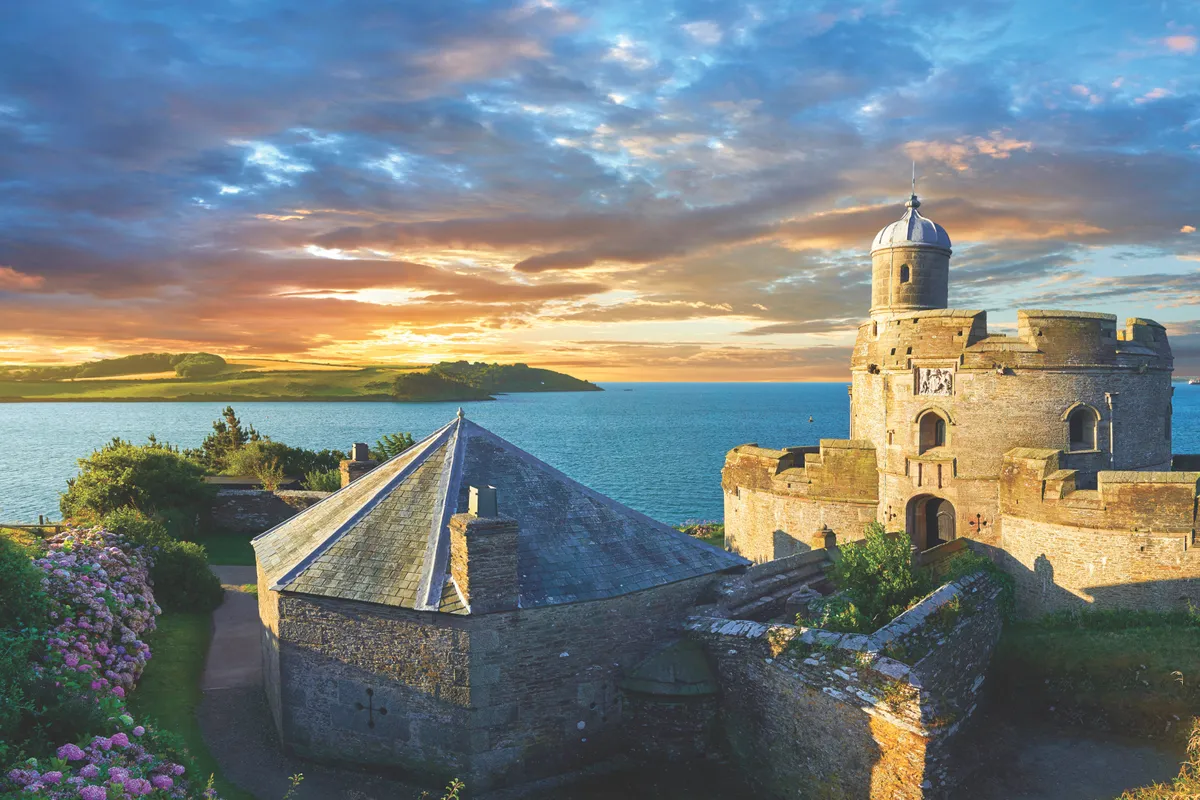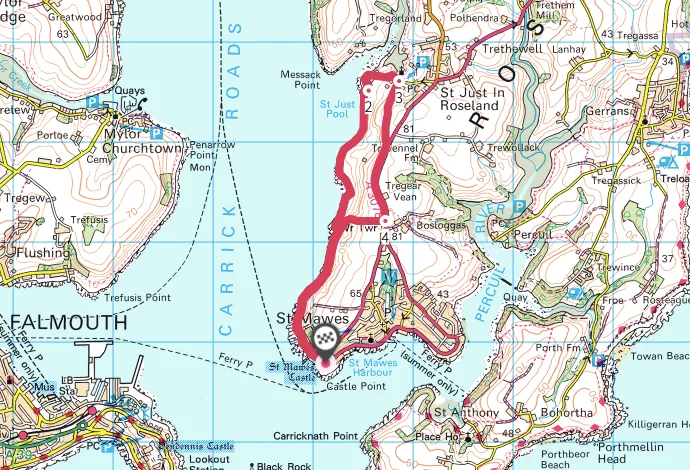Government restrictions around COVID-19 vary across the UK. We strongly advise checking restrictions in your local area before visiting. Ordnance Survey have put together a comprehensive guide about ‘getting outside safely during Covid-19‘. This resource brings together current advice from government and local authorities to help you decide where to go, what to do and how to stay safe.
A moderate-level, 4.5-mile walk from St Mawes to St Just in Roseland, exploring the history and wildlife of Cornwall's Roseland Peninsula.

Wildlife on the Roseland Peninsula
The cirl bunting was once widespread across the south of England. But by the late 1980s – due to a loss of its favoured, traditionally managed, mixed farm habitat – it was in danger of disappearing as a British breeding bird.
Thankfully, a long-running RSPB project has now boosted the population in its South Devon stronghold by 10-fold. The scheme has also returned the species to neighbouring Cornwall – the first successful reintroduction of a songbird in Europe.
Related articles
History of St Mawes Castle
Small but perfectly formed, the castle – built in 1540 – is one of Henry VIII’s most decorated defences, with king-praising Latin inscriptions carved on the walls.
Unlike Pendennis – seen across the estuary – which was under siege for five months in 1646, St Mawes fell fast to Parliamentarian forces; thus it lay neglected and unchanged. It was rearmed in the 19th century: in 1828 the flagstoned gun emplacement room could sleep 70 soldiers. Now it holds 70 wedding guests, a dramatic spot for matrimony.
Martial signs do remain – including the Alberghetti Gun, dredged from the wreck of a 16th-century warship – but the castle today is a peaceful place. The cannons’ booms are replaced by the wind whipping around the stone bastions, and the caw of swooping seagulls. I boarded the ferry again, bound for the galleries and flip-flop shops of Falmouth once more.

St Mawes to St Just in Roseland walk
Distance: 4.5 miles/7.3km | duration: 3 hours | difficulty: moderate
1. Castle on the coast
Tear yourself away from the eye-watering views at St Mawes Castle – – and head to the end of Castle Drive.
Go through a gate into Newton Cliff and follow the footpath through fields thick with bracken and bramble and alive with butterflies (painted ladies were plentiful in 2019). Along the rocky shoreline of Carrick Roads, sandwich terns can be spotted among groups of gulls, identified by their striking yellow-tipped black bills.
2. Exotic males
The path ends at Church Town Farm – a prime place to look for cirl buntings. As you join the road and walk uphill from the boatyard, scan the hedge tops and field margins for sparrow-sized birds. Females cirls are streaky brown, while males are exotically marked with black throats, matching eye-stripes and bright yellow bellies.
3. Tropical tea break
Carry on to the charming church of St Just in Roseland. This 13th-century granite chapel sits in lush, semi-tropical gardens on the edge of a tranquil creek, the perfect place for a mid-walk picnic. Cornish cream teas are available from Miss V’s Teashop nearby.
After a scone (or two), climb a set of steps (opposite the toilets) that leads on to a green lane and, eventually, out into open farmland. Follow the hedgeline, right, to a gateway and then a track around to
the left.
Just before you reach the main road, cross over a stile on your right (signposted to Halwartha) and take the footpath along the top of sloping fields, keeping an eye out for hunting kestrels hovering overhead.
4. Songs and scones
At Halwartha water tower, turn right. Before continuing downhill and back to Newton Cliff and St Mawes, check the area closely for more cirls. With luck, you’ll be treated to a male bunting belting out its summer song from a hedgerow perch.
It is a crisp, rapid rattle, similar to a yellowhammer’s ‘little bit of bread…’ chorus, but without the cheesy finish.
Apparently, the Cornish cirl bunting’s song is subtly different to that of its Devonian cousin; the avian equivalent of the jam-then-cream topping variation on those scones.
St Mawes to St Just in Roseland walking route and map

